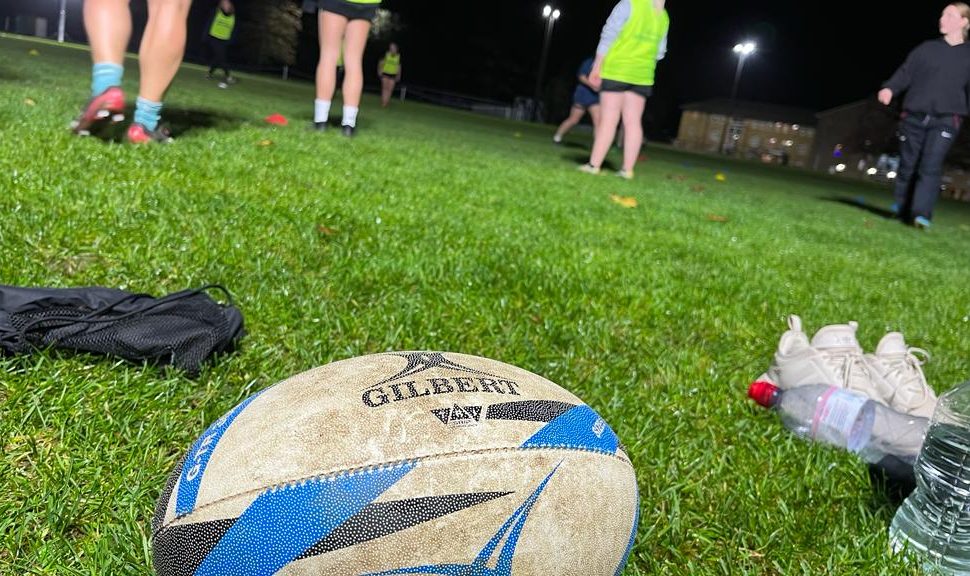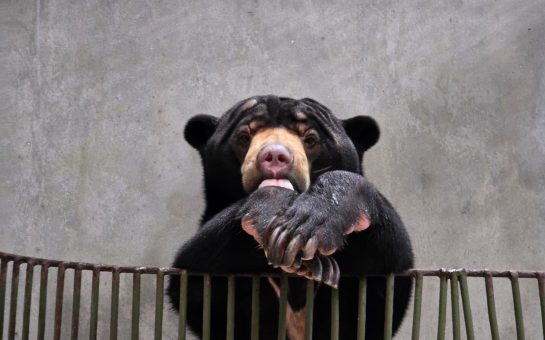“If a girl scores a try, it’s worth double points!”
That’s what the coach said to the tag rugby team one frosty Sunday morning at training.
My sister and I were the only two girls on the team and, from that moment, the rugby ball was flung at us from all angles whether we liked it or not.
I scored my first try that day. I hadn’t touched the ball weeks before that and without that added incentive, the promise of double points, I doubt I would have that day either.
I like to think girl’s rugby has come a long way in the last 15 years. It would make me happy to believe that groups of young girls were getting involved in tag rugby early on and building up a love for the game from grassroots level.
My role model growing up was Jonny Wilkinson, obviously. My sister and I would mimic his trademark pre-conversion pose and pretend to send the ball soaring through a set of imaginary posts – winning the world cup for England over and over again.
It’s wonderful that girls growing up playing rugby nowadays have role models such as Zoe Harrison when they’re kicking, or re-living Marlie Packer’s incredible hat-trick when diving across the try line.
I think the success of the Lionesses in the past five years has worked as a catalyst for women’s sport. It has provided a springboard to move the conversation forward and awakened a passion in young girl’s hearts as they realised, ‘I could do that too’.
It is not just women’s football that has taken off, cricket has also seen massive growth as well as women’s boxing and, of course, rugby.
2023 has been a benchmark year for Women’s Rugby. It saw the first ever standalone women’s international rugby match at Twickenham Stadium. A record women’s crowd of 58,498 watched as the Red Roses took on France and sealed a Six Nations Grand Slam.
This crowd surpassed even the attendance of 42,579 at the England v New Zealand 2022 Women’s World Cup Final at Eden Park.
This year also saw the launch of a ‘revolutionary’ new women’s rugby union competition known as WXV. The Red Roses took home the win in this new three-tier annual international competition which is supposedly bringing forth a new era of women’s rugby.
It is easy to believe that women’s rugby is a relatively new craze, only becoming popular in the last decade or so. In reality it has been around a lot longer than we might realise.
In 1884, Emily Valentine became the first official woman to play rugby for her school team in Enniskillen, Ireland. A few years later, in 1891, across the globe there were rumours of a women’s team in New Zealand attempting to tour.
Unfortunately, the team were forced to disband under the tenuous grounds of social unacceptance. For many years, women were made to play the game in secret and it wasn’t really until the 1960s that the women’s game actually began to take root.
The first ever recorded women’s rugby union team was developed at Edinburgh University in 1962 and the first fully documented women’s club match took place in 1968 in France.
By 1969, the first national association for women’s rugby was formed in Toulouse and the first national championship took place in the 1971-72 season. Acceptance of the game spread as more and more countries began to form women’s rugby unions including Canada, the Netherlands and Spain.
In 1991 the Women’s Rugby World Cup was established and finally in 1999 the women’s Five Nations was introduced (which has since developed into the Six Nations).
Despite this progress, the Red Roses had to wait another twenty years before they were granted professional contracts. In 2019, the English women’s rugby team were the first team in the world to be awarded fully professional contracts and since then other international teams have followed suit.
For the first time this year, all competing teams in the Women’s Six Nations were offered professional contracts in some form. Coverage of the women’s division is now also much broader with Six Nations matches available to watch on BBC iPlayer, and the Women’s Rugby World Cup receiving a primetime slot on ITV last year.
But it is not just international women’s rugby that has taken off, premiership women’s rugby has grown in popularity and created a name for itself on the domestic stage.
Top flight teams such as Harlequins, Bristol Bears and Saracens are now home to Premiership women’s sides, and as of November 2023, all Premiership Women’s Rugby matches will be broadcast live on TNT Sports. This pivotal, multi-year deal highlights that the appetite for the women’s game is growing massively and widespread coverage of women’s premiership matches are, ultimately, in demand.
One team that will benefit massively from this broadcast deal is Saracens Women. This year the squad, which is home to a number of international players, will celebrate its 35th anniversary.
Director of Rugby at Saracens Women, Alex Austerberry, said: “We are on the shoulders of some of the giants who have come before us and you think of the challenges that they faced, the barriers that they smashed through – we are in a better space now.
“That doesn’t mean that there are no barriers and challenges but they’ve proven that it is certainly possible.
“We have a duty to make sure we grow it [the game] and give every little girl out there the aspiration and the opportunity to do whatever they want in rugby and I still think we have got a little bit of work to do on that.”
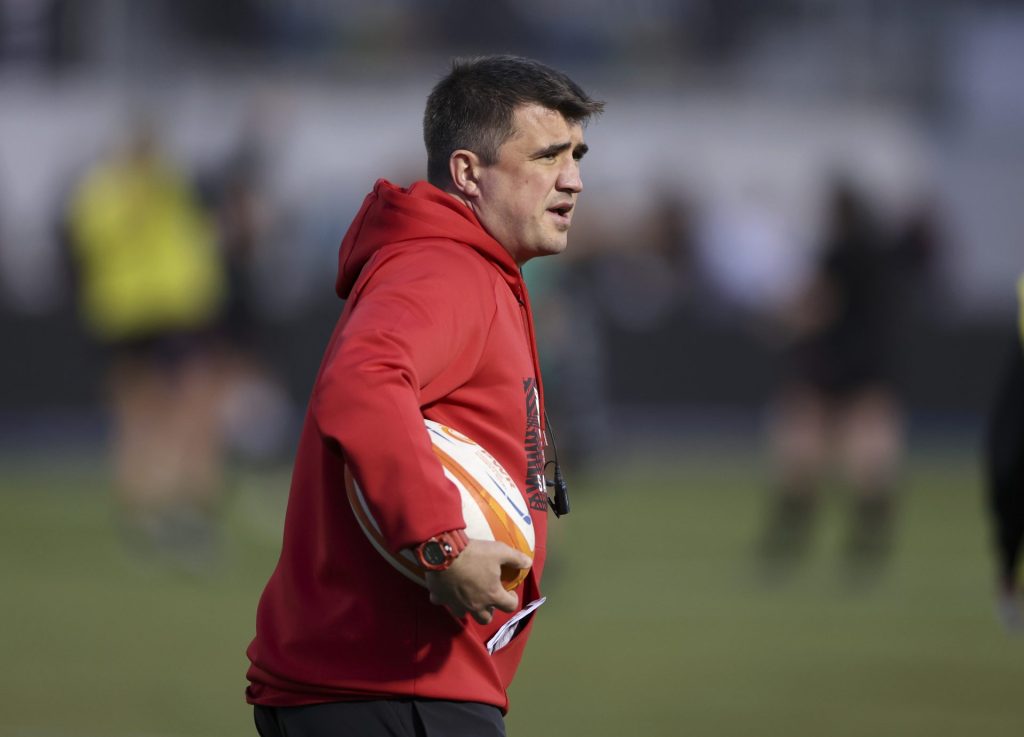
Sonia Green, better known as Sonic on the pitch, is Saracens Women’s most capped player. She joined the team at the age of 19 and remains part of the squad over 20 years later.
She agreed with Austerberry that women’s rugby, and women’s sport, has progressed significantly in the past decade.
She said: “I always say sport reflects society. I have been here 22 years or so and I have seen a lot of changes.
“Also being a PE teacher, that’s where I have seen it right from grass roots. When I first started teaching PE the thought of girls doing sport was seen as masculine and that was seen as a bad thing.
“Whereas, fast forward 22 years, now it is a positive thing to be strong and confident and athletic, to show those values of discipline and hard work and if you choose to do it in sport then that is seen as a positive.”
Green also described the new TNT broadcast deal as brilliant, as she hopes it will draw more of an audience towards the sport.
She explained that many people got hooked onto women’s rugby during lockdown when the games were streamed online.
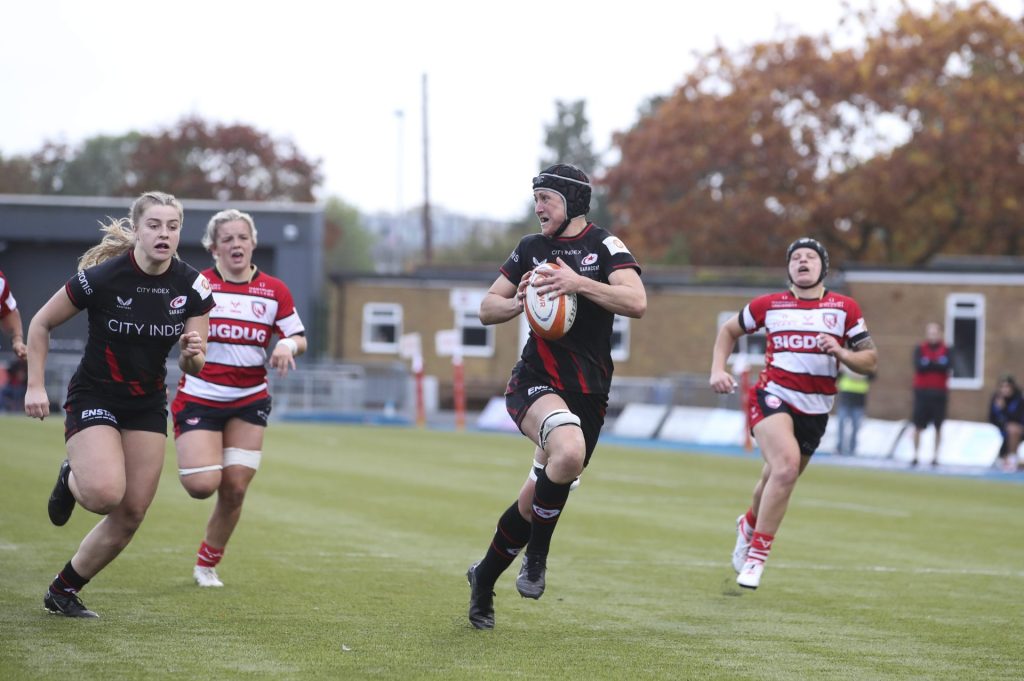
She described one of the major obstacles holding back the growth of women’s rugby was getting numbers to live games.
She said: “If you get people through the door, once they’re in they’re going to have a great experience.
“I mean personally, as a player, when you run out into an empty stadium it is really tough but it’s quite frustrating when you know that where we are in the community we have loads of primary and secondary schools around us.
“It is a really diverse community where lots of them won’t have necessarily been exposed to live sport before. But once we get them here they realise that it is accessible.”
Getting people to attend women’s rugby games and support their local teams is a historic problem not only felt at Premiership level. Lower tier women’s rugby has also encountered the same issues with popularity.
However, there has been a recent boom in interest with numbers of spectators rising significantly. Saracens Women alone saw a seasonal membership increase from 31 to 856 and a club-record of nearly 2,992 people attending the women’s match (The Duel) against Harlequins.
This newfound hype for women’s rugby is being felt on all levels with one domestic women’s rugby team also noticing an increase in the number of spectators at their matches.
Thamesians Women first opened up in 2018 and now train weekly at St Mary’s University in Twickenham for their league matches in the Women’s NC 1 South East (North) division.
Sammy Watts, a member of the team, said: “When we first started playing we would get the odd couple of people coming down.
“But now we get a lot of people coming and it is so nice to see us getting an equal amount of people on the sidelines, sometimes more than the men’s do.
“It is so nice to see that they’re not coming just to make up numbers but now they are coming because they actually want to watch us.
“That is how it should always be.”
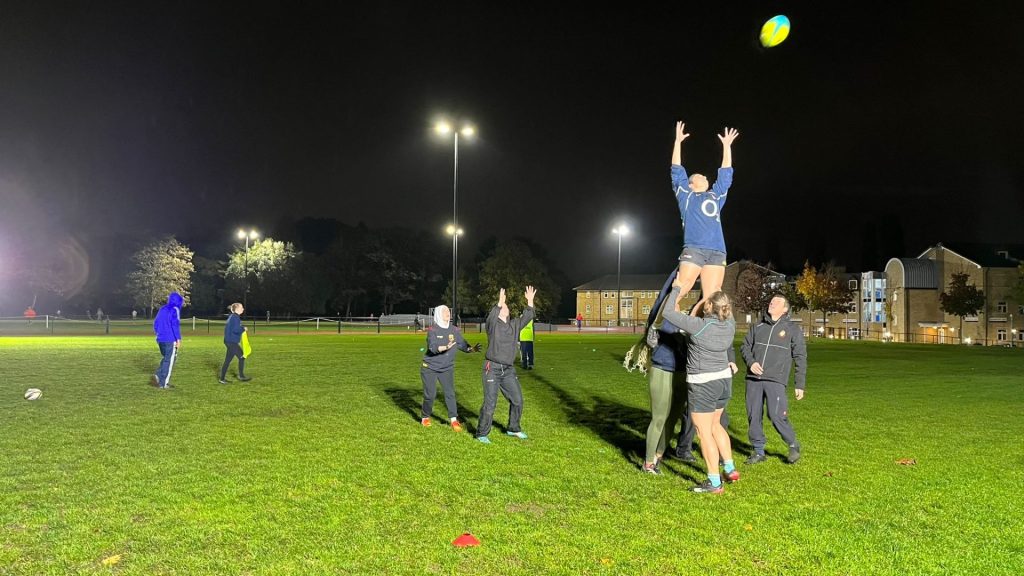
Despite this increase in popularity, getting numbers on the pitch can still be quite the struggle for domestic teams such as Thamesians.
Nigel Botherway, head coach at Thamesians Women, said: “The RFU made good noises about the Red Roses being in cup finals but at this level, the biggest challenge we face is getting a team out every week.
“Last season, although we won our league, we had so many games that were not fulfilled because the opposition couldn’t put a team out.
“I don’t think the numbers are there; women’s rugby is going in the right direction, but as far as numbers are concerned it is a real struggle.”
So why is it that women’s rugby is still not drawing in the same numbers as the men’s game? What is missing?
Giles Ward is a coach at Thamesian Women and Twickenham Girls team. He believes there needs to be more of a drive in schools to encourage young girls to get involved in the sport from an early age.
He said: “The local schools in my opinion are not getting the links with the clubs, which is vital, and at primary school level they need to.
“I asked them [The RFU] once ‘why are you not going into primary schools?’ – that’s where the girls start playing cricket and football.
“But also other sports, more ‘recognised female’ sports like netball, athletics, gymnastics, horse-riding. So by the time they’re at junior school, if they’re sporty – they have already got a sport.”
However, despite this supposed lack of drive in schools, there are still plenty of young girls that are getting involved in the game from grassroots level and playing at clubs locally.
Many parents spend weekend after cold weekend standing on the sidelines of girls’ rugby matches, watching as their daughters dive around in the mud and experience a sense of comradery that is unmatched in any sport.
One of those parents is Adam Webb who watches his daughter, Poppy (known by teammates as ‘Nigel’) Vuillemin-Webb, each weekend of the season as she plays for the U16s Twickenham Girls side.
Adam loves watching his daughter from the sidelines and explained: “As a parent, I have a sense of pride.
“My daughter is a rugby player, I could shout it out the window.
“They clearly enjoy it, the thing with Nigel [Poppy] is that at any given moment I look over and she is grinning.
“I have never seen anything like it, she never stops grinning when she’s playing.”
Another parent, Suzanne Sexton, explained that her daughter loves playing the game as it is a good mental release where the girls can relax and let loose.
She added: “I think it is becoming socially acceptable a little bit more and she [her daughter] is actually really quite proud to say she plays rugby.
“Whereas a few years ago that wouldn’t have been the case.”
Suzanne took her daughter, Lois, to the Red Roses match at Twickenham earlier this year and described it as the best match both of them had ever seen there.
So with the new TNT Broadcast deal for Premiership Women’s Rugby, the Red Roses returning to Twickenham in the upcoming Six Nations and the women’s Rugby World Cup on the horizon in 2025, it is safe to say the next 18 months is set to be a very transformative time for the game.
While it is clear there are still issues in terms of numbers and drawing in attendees to matches, women’s rugby has certainly come a long way in the past decade and I have no doubt it will continue to break down barriers and progress in leaps and bounds in the months to come.
So whether more girls are getting involved because they come from a rugby family, or because their friends play at school, maybe they watched the Red Roses triumph at Twickenham Stadium or maybe they just play because, as one player from Twickenham girls shouted to me: “It’s fun because the boys don’t like you playing it!” Does it really matter?
Women’s sport in general is growing and women’s rugby has been waiting in the wings for their turn for years.
The next few years will be its time to shine through and break the mould. All I can say is that the young girl who was resentfully chucked the ball out of competitive spite rather than comradery, is pleased with what she sees.
